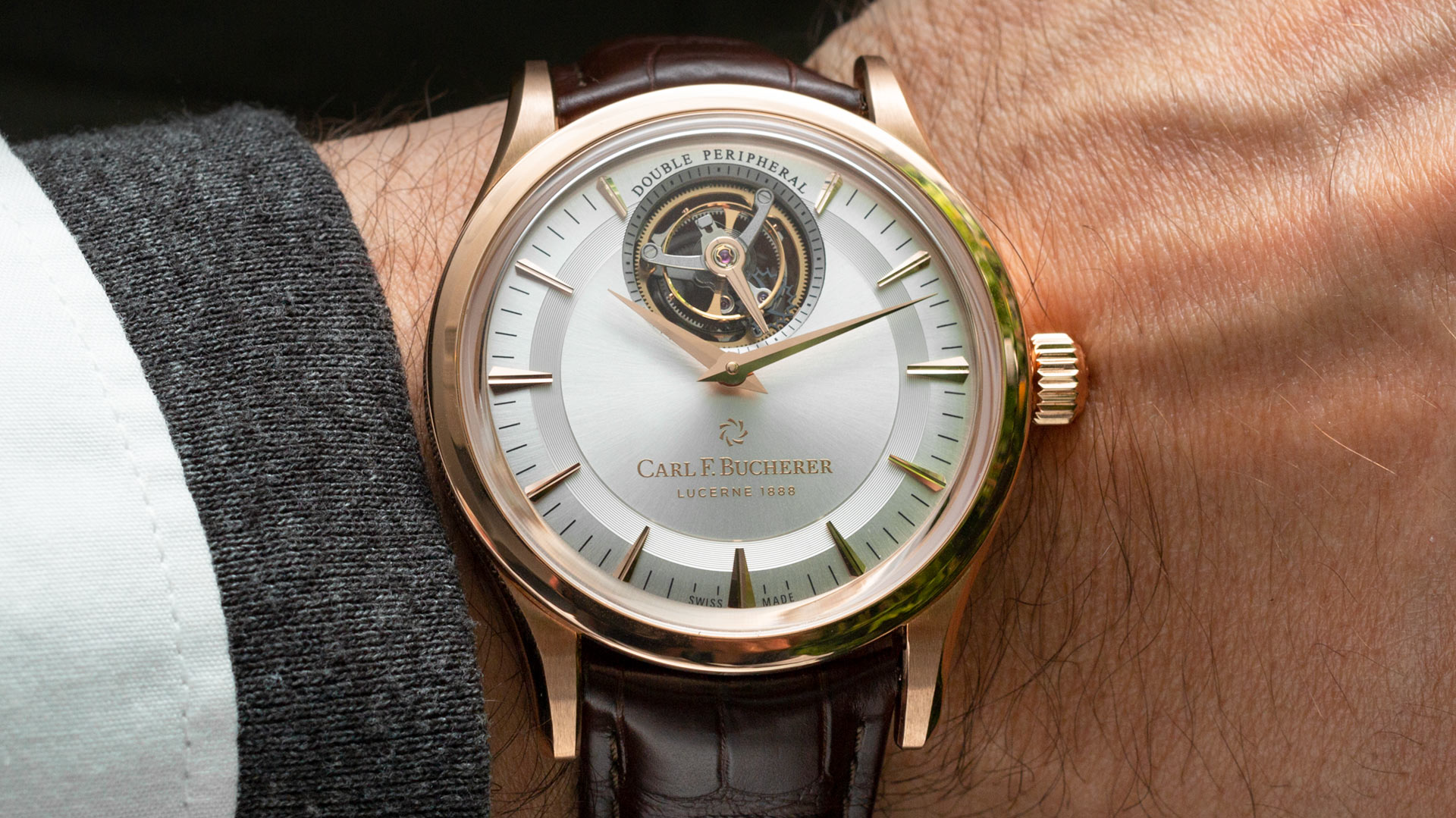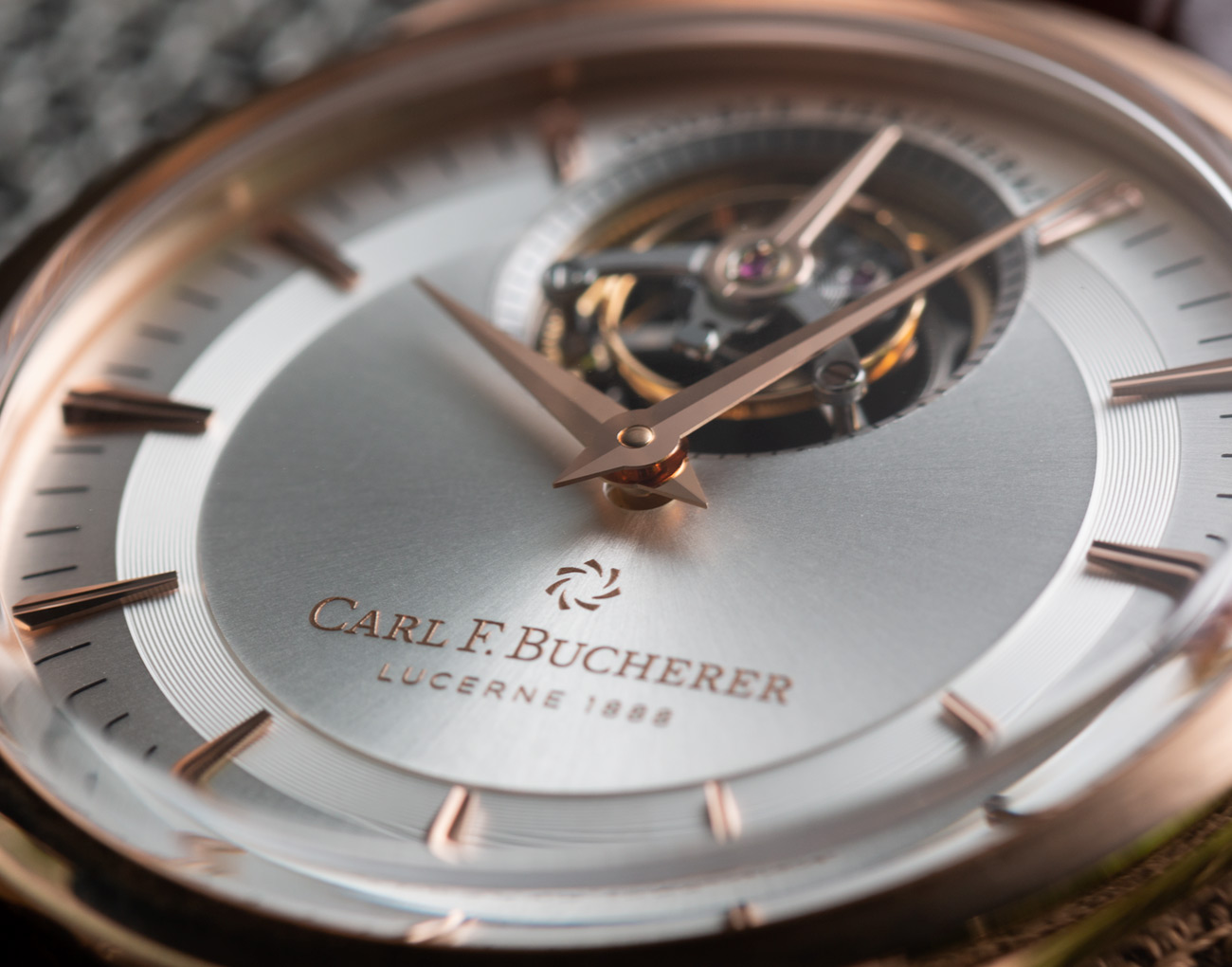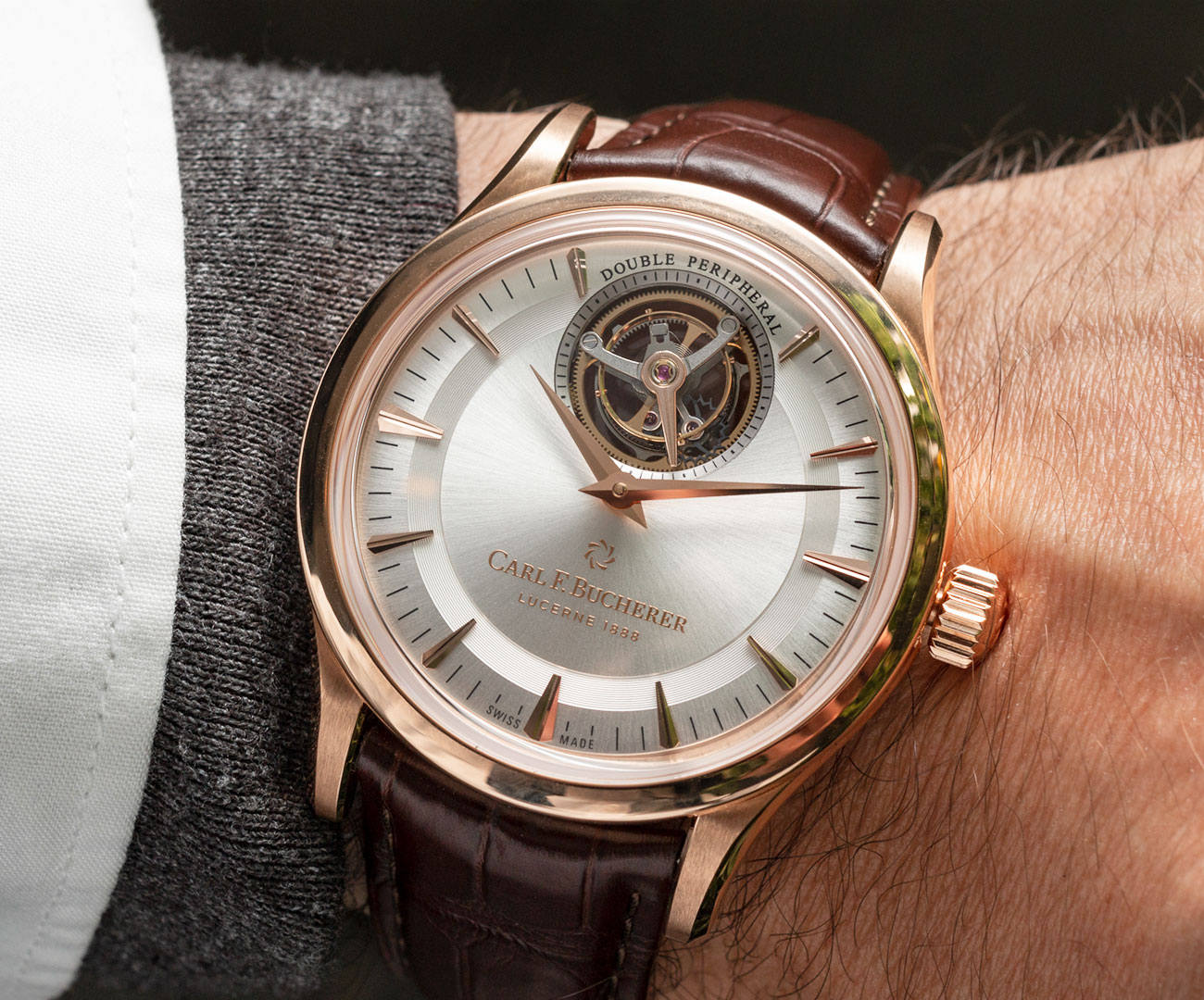
It is reasonable that a still family-owned watch brand’s 130th anniversary should be acknowledged with a new collection and a tourbillon model to top it off. That is what Carl F. Bucherer presented recently at an intimate event in New York. So far, the Carl F. Bucherer Heritage Tourbillon Double Peripheral is actually the only member of the new Heritage collection, but more than just representing references to the brand’s past – though there are plenty of those – its highlight is technical. Specifically, it takes the brand’s signature peripheral rotor concept to the next level with a peripherally mounted tourbillon.
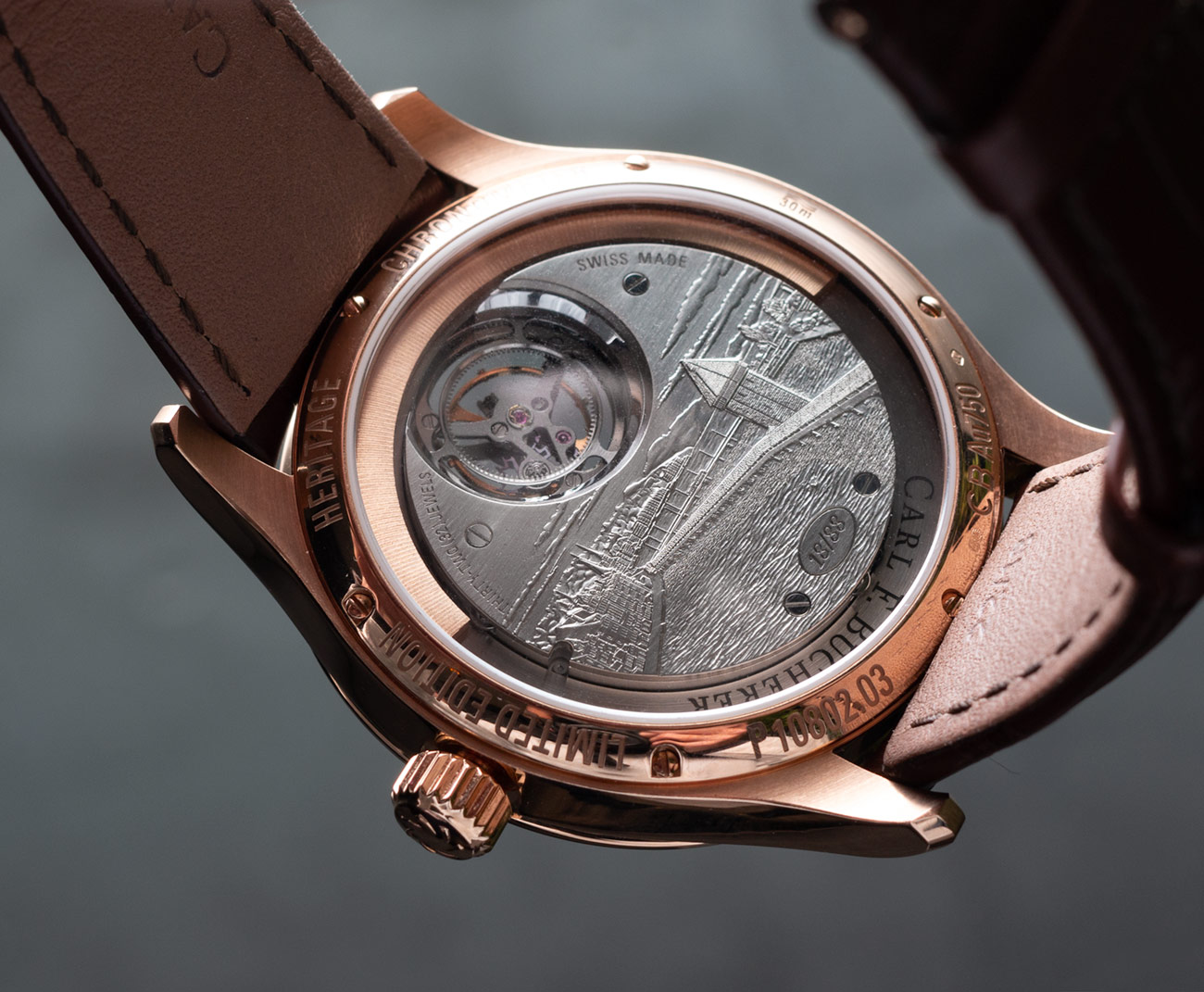
You may be familiar with the “flying tourbillon.” This is a tourbillon that is mounted from beneath so that it isn’t obscured by the bridge that usually secures a tourbillon of the non-flying variety. It makes the already complicated mechanism even more so, but it is for display purposes only – in addition to complication for its own sake, of course, just as the modern application of the tourbillon itself. It may at first appear that that is what is going on with the Carl F. Bucherer Heritage Tourbillon Double Peripheral watch, but this is not a flying tourbillon. One can see clear through the tourbillon’s aperture, and turning the watch over doesn’t reveal any further clue to what is supporting it.

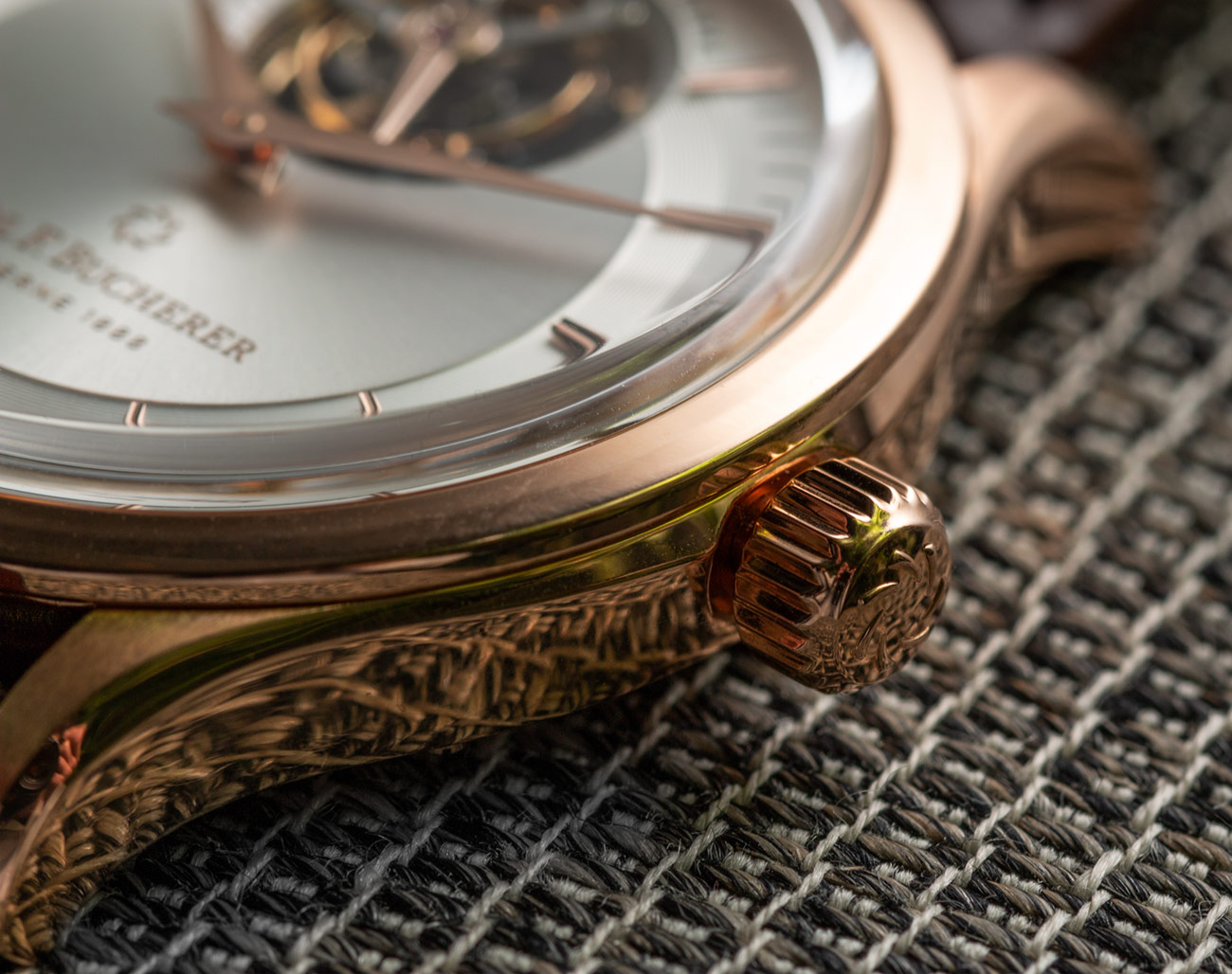
The concept of the Carl F. Bucherer Heritage Tourbillon Double Peripheral is similar to the flying tourbillon in that it leaves the view of the tourbillon open – but from both sides, in this case. It is a cool effect, with the idea of making the tourbillon appear as if floating. In fact, it is mounted and turns on three ceramic ball bearings, designed to be invisible to the user. The view of the tourbillon is indeed clear, and one can easily see the finishes and elements that comprise it such as the purple silicon escapement. The tourbillon makes a full rotation every 60 seconds, so it is able to double as a seconds indicator – and it can be stopped to accurately set the time, unlike many tourbillons.
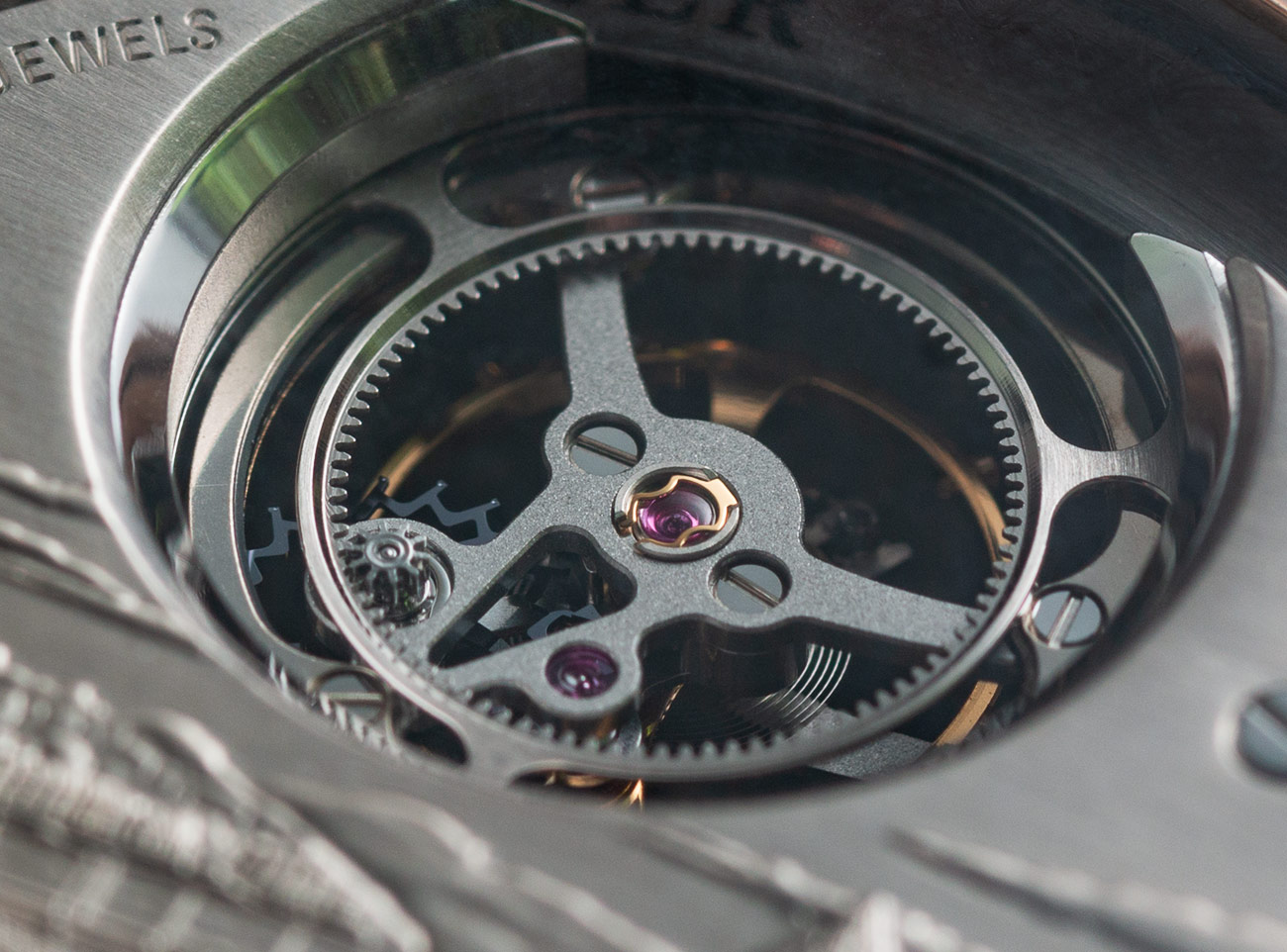

The in-house CFB T3000 movement first debuted at Baselworld 2018 in the Manero Tourbillon Double Peripheral. It is an evolution of the CFB A1000 movement first released in 2008 that features a peripheral rotor for its automatic winding system. The peripherally mounted tourbillon plus the peripheral rotor makes this movement “doubly peripheral,” I suppose. Made of 189 parts, the CFB T3000 has a power reserve of 65 hours, operates at 3Hz, and is COSC chronometer-certified. While Carl F. Bucherer did not invent the peripheral rotor, they can claim to be the first to put it into serial production, and it is a cool feature, in my opinion.


What is a peripheral rotor and why is it cool? It is a variation of the traditional automatic movement with a weighted rotor that is mounted above the movement plate and winds the mainspring as the watch moves around on the wearer’s wrist. In many cases, the rotor obscures a view of the movement that the brand would like to show off as well as adding overall thickness. One way around this is using a micro-rotor – or just opting for a manually wound movement – but the peripheral rotor is still pretty uncommon. Just like the tourbillon, the peripheral rotor uses ball bearings and results in more to see.
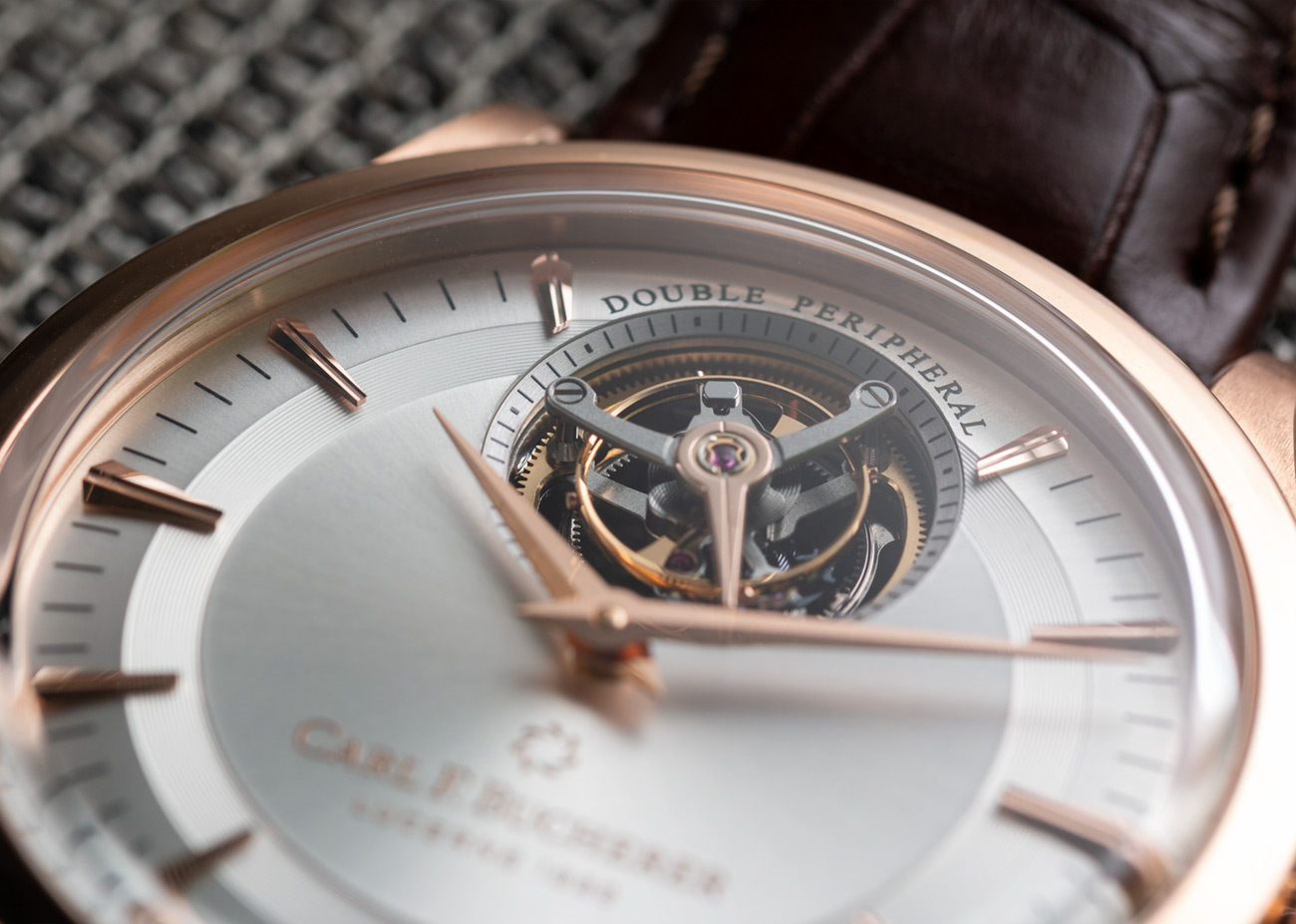
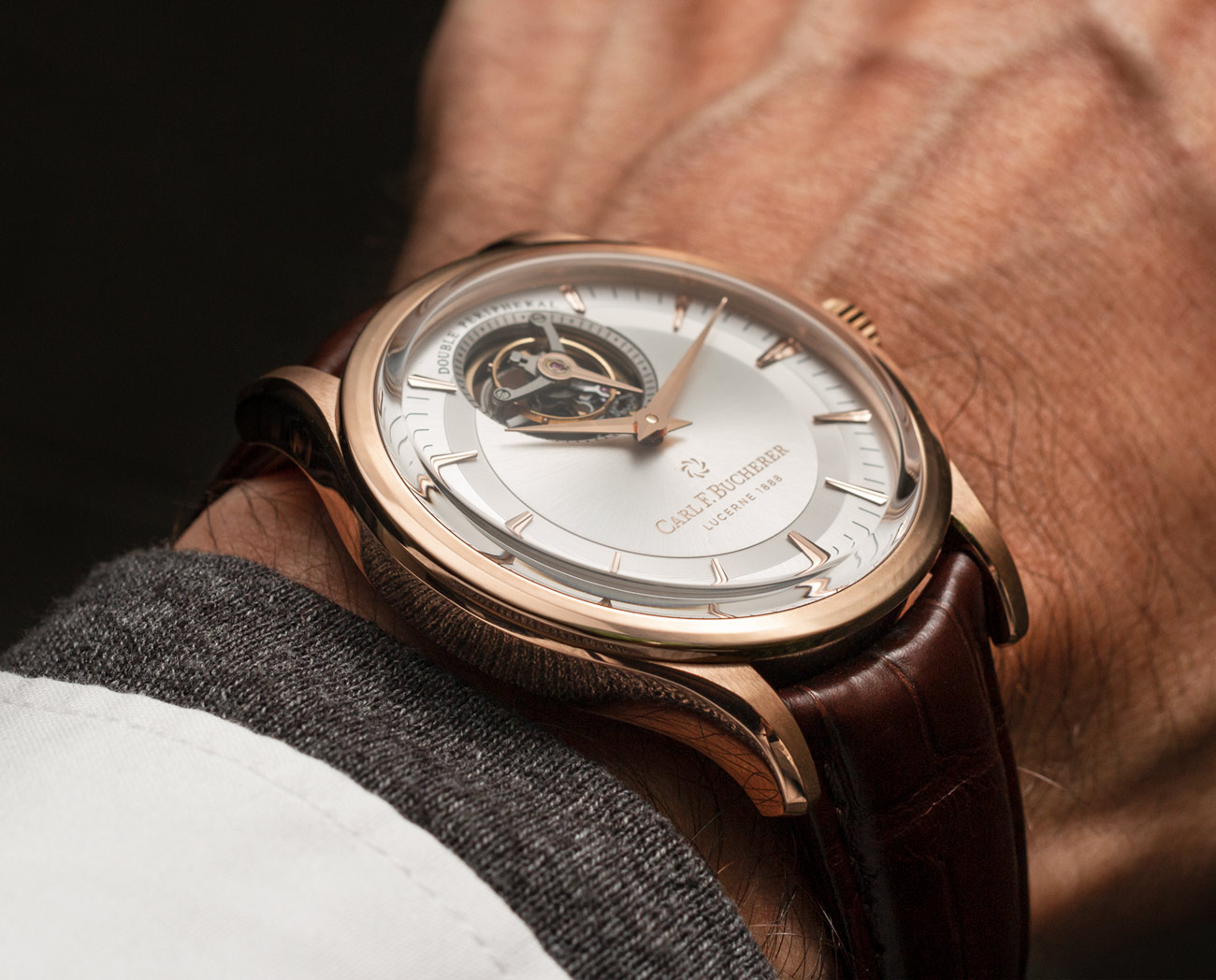
For the Carl F. Bucherer Heritage Tourbillon Double Peripheral, the rotor is out of the way, but some of the movement’s interesting features like the peripheral rotor system are still hidden under a solid (with an aperture for the tourbillon) bridge. The intricately hand-engraved 18-karat white gold movement bridge features an image of Chapel Bridge which is a landmark in the brand’s hometown of Lucern, Switzerland. Each engraving, we are told, takes two weeks or more to complete and features a swan in a different position on the water – which is so small as to be nearly proportional to the image, and which I even had trouble finding at first.
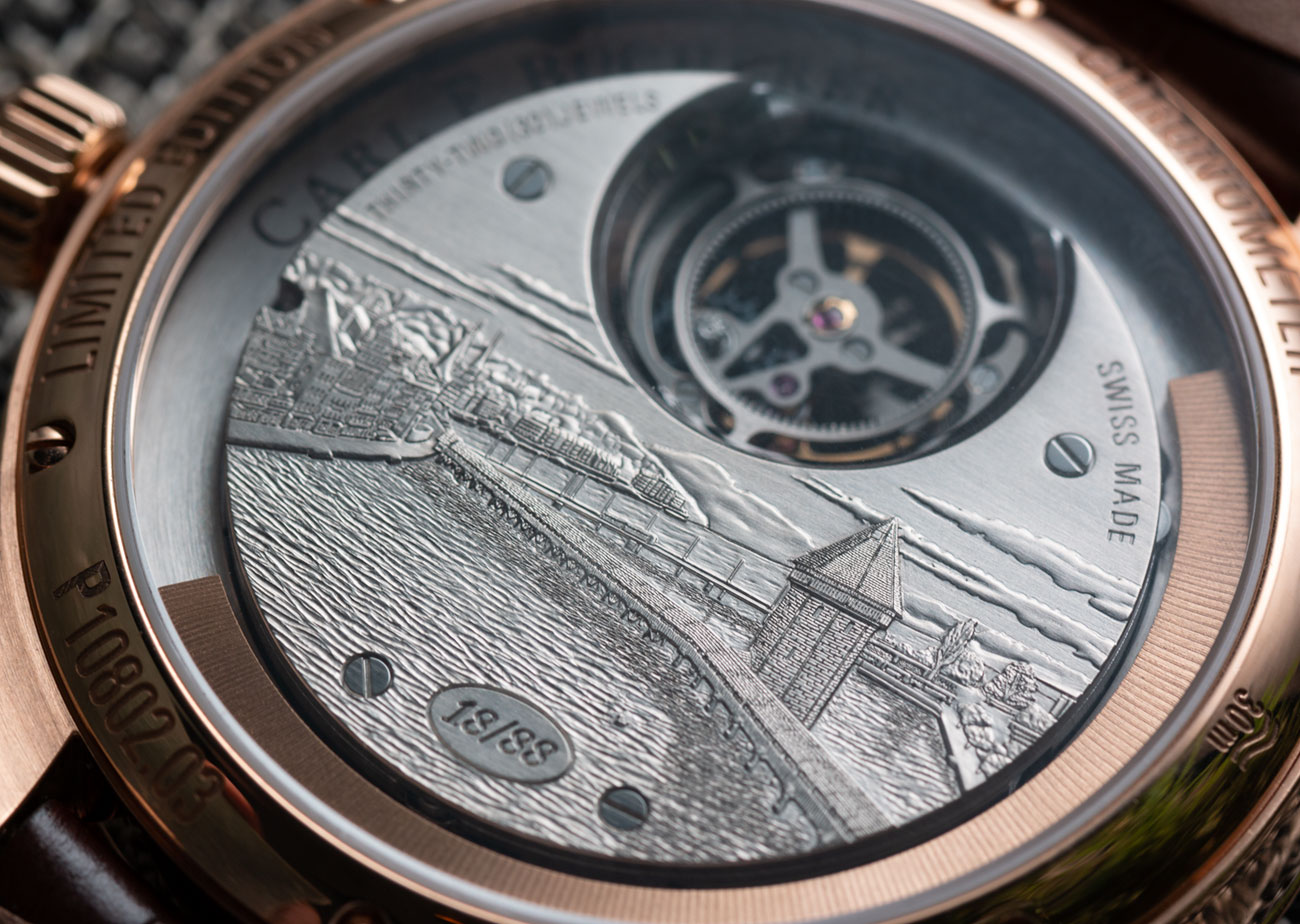

While the peripheral rotor is a cool technical feature in and of itself, its potential thinning benefit hasn’t lead to a particularly thin watch. Still very much within reason and wearability, the Carl F. Bucherer Heritage Tourbillon Double Peripheral measures 42.5mm wide and 11.9mm thick in 18k rose gold (30m water-resistant). The raised “box-style” sapphire crystal certainly adds some height to that measurement, as well as a retro touch. Oh yeah, I nearly forgot that this is meant to debut a new collection, but a lot of the elements here are pretty familiar. That said, everything from the dauphine-style hands and applied hour markers to the sunburst silver dial with “milled rings” to add visual interest is all very nicely executed. In any case, I’m interested in seeing what the new collection brings, especially in the more affordable range.
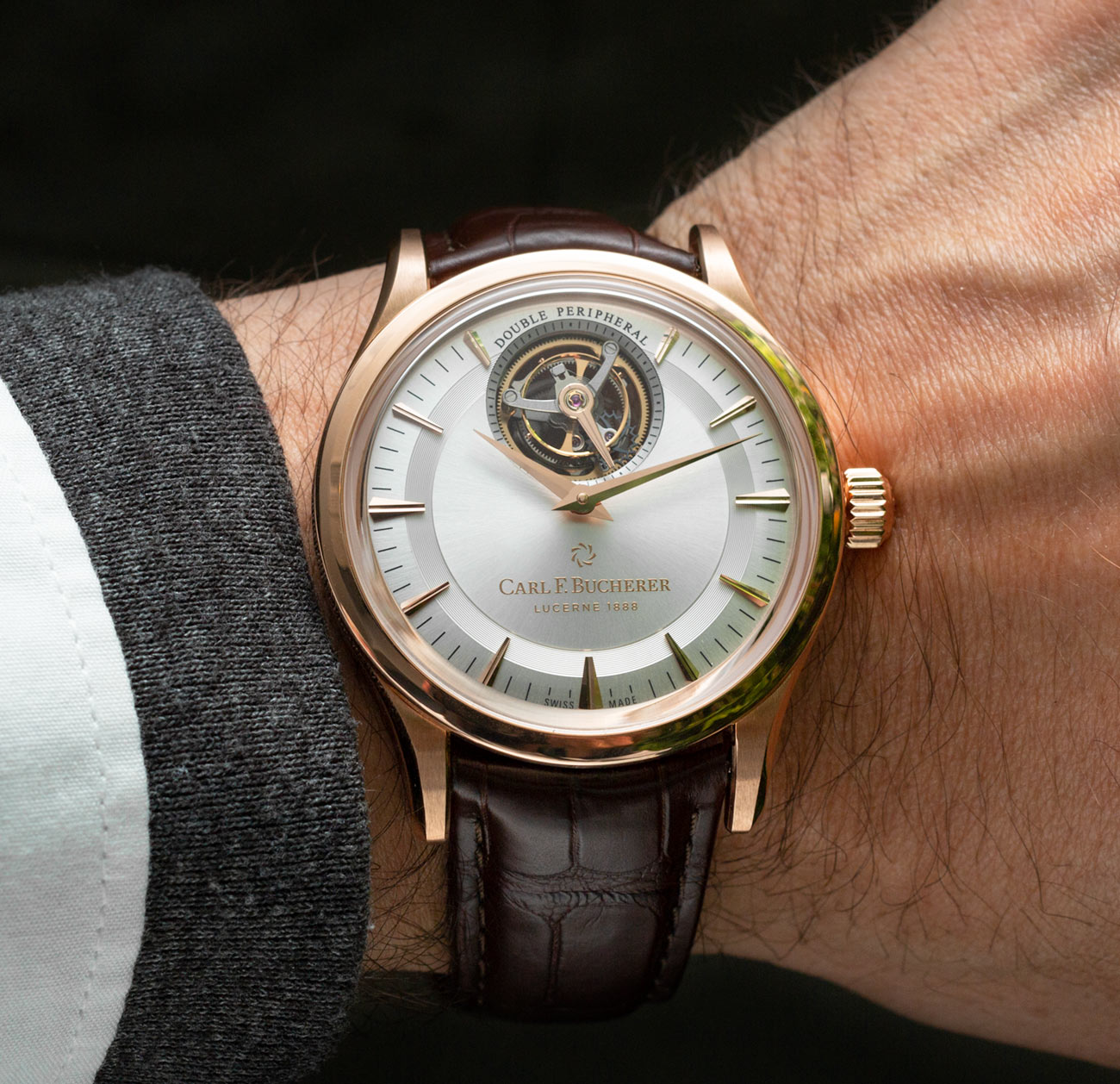
Carl F. Bucherer is a brand with a number of strengths that seems like it should be in the spotlight more. And every time I am reminded of them, I feel sure they will be soon. With the Bucherer Group’s recent acquisition of US watch retailer Tourneau, American distribution will surely expand, but Carl F. Bucherer assures us they intend to keep production at its current modest levels. Being a birthday watch, as well as with Heritage in the name, the brand has found a number of ways to reference their founding year of 1888 which also happen to be pretty auspicious in China, an important market for the brand. The Carl F. Bucherer Heritage Tourbillon Double Peripheral is limited to 88 pieces with a price of $88,888 each. Learn more at carl-f-bucherer.com.

